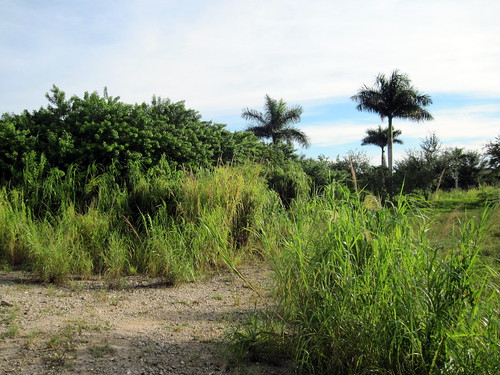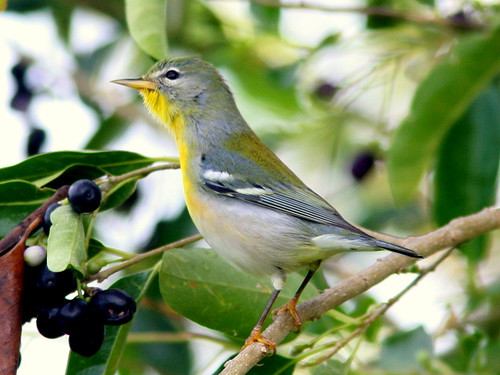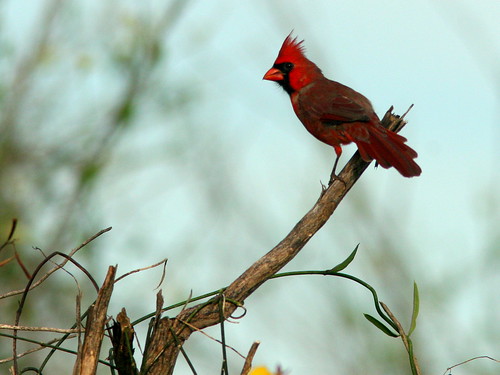Posted by: Ken @ 1:59 pm
This morning, warblers were hiding in the dense leaves of this “bird thicket,” or moving among the small Live Oaks that run along the right background:
There are a couple of particular problems with birding in the autumn. First, the migrants aren’t singing as they do in the spring. Second, the trees are still loaded with full-sized leaves. I could add “confusing fall warblers,” but only a few actually fit that category. Anyway, you have to see them first before they can confuse you.
This morning was a case in point. Tropical Storm Nicole, or what was left of her, had passed by yesterday, preventing us from taking our “power walk,” which is customarily followed by a little birding if laziness, appointments, shopping or other chores do not interfere. After a day of forced leisure, Mary Lou and I headed out to see if the change in weather had brought any new warblers into our local birding patch.
It’s great to get out early before the wind starts up and the butterflies are still sleeping. Under these conditions, the presence of a bird is easily revealed by the slightest stirring of a twig. Thanks to the fact that we have 20 times more motion-sensitive rods than color-sensitive cones on our retinas, it is quite easy for us to detect such peripheral visual clues, especially if the wind isn’t blowing, and the butterflies aren’t flying about.
“Oh, to be 70 again!” I used to laugh when my Dad would say that. (OK, young folks that don’t want to hear any grousing can skip this paragraph.) For some of us old guys, there are cataracts and “floaters” that add to the fun and challenge of birding. Truth is, time does take its toll and, because they are subjected to greater exposure to UV light, the eyes of mariners and birders are at increased risk of developing cataracts. Of course, genetic and many other factors can contribute to the formation of lens opacities. After I had my right lens replaced, I experienced a shower of dark spots, “floaters,” in that eye. To a non-birder, these would be of little consequence, but for me they can be a real distraction, especially out in the open, when they fly by like birds that demand my attention. They are gradually getting better, but vision in my “camera eye” is not sharp enough to permit me to use manual focus.
Dependence upon auto-focus has drawbacks, such as with this photo of an adult male American Redstart, optimally positioned in good light. I thought I had gotten my best-ever shot of this active warbler.
Well, at least the leaves in the foreground are in good focus: 
But butterflies are a greater problem. Here in South Florida, the Zebra Heliconians are the worst offenders. Their striped wings flicker amid the foliage, and they dart here and there willy-nilly.
Zebra (Heliconius charitonius), the State Butterfly of Florida:
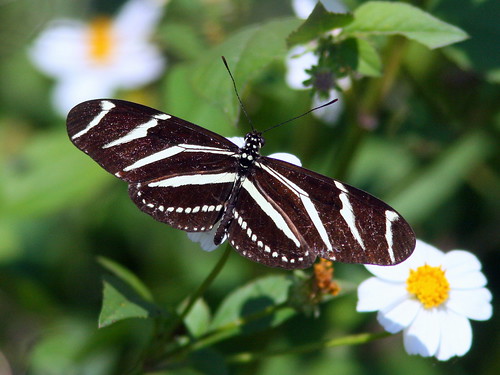
Another Heliconian, the Gulf Frittilary (Agraulis vanillae), was also well represented…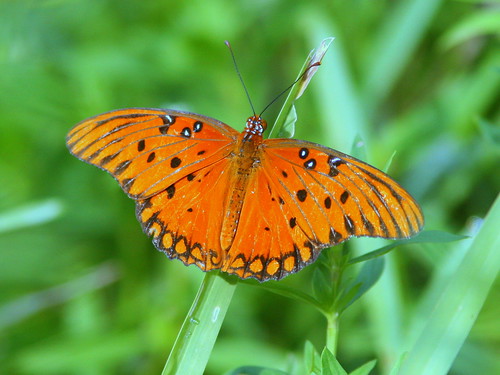
…as were richly colored Queens (Danaus gilippus):
I’m tempted to place gnatcatchers in the same category as “distractions,” because all too often a sought-after warbler disappears into the canopy, and out pops a gnatcatcher. However, I’ve often found that other species may congregate with gnatcatchers during migration, and it is a good idea to assume they are not alone.
Blue-gray Gnatcatcher:
Blue Jays deserve respect as well. A bunch of them were calling raucously when we arrived at the “bird thicket.” Sure enough, a Red-shouldered Hawk soon flew into view and disappeared before I could take its picture.
This Blue Jay has completed its molt and is quite handsome:
Enough complaining! True, about a dozen warblers went unidentified, and several Black-throated Blues, two redstarts and one probable Yellow-throated Warbler “got away,” but one Northern Parula was very cooperative.
Notice the color contrast between the legs and feet of this Northern Parula:
We got good looks at several Prairie Warblers…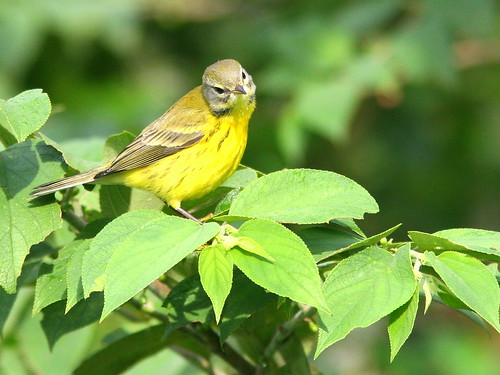
…the Ovenbird came out of hiding again, to Mary Lou’s delight…
…the Northern Cardinal was as beautiful as ever…
…and, we welcomed our first-of-the-season Palm Warblers. Soon these “Florida Sparrows” will be everywhere until next spring:
When we got back home, a Great Blue Heron (photographed through our back window) was walking next to our patio, intent upon catching lizards:
The birding experience does not have to be perfect to be fun, and anyway, there’s always tomorrow!













